4 Questions and Answers on The Domes
What's going to happen? That could be the toughest question of all.
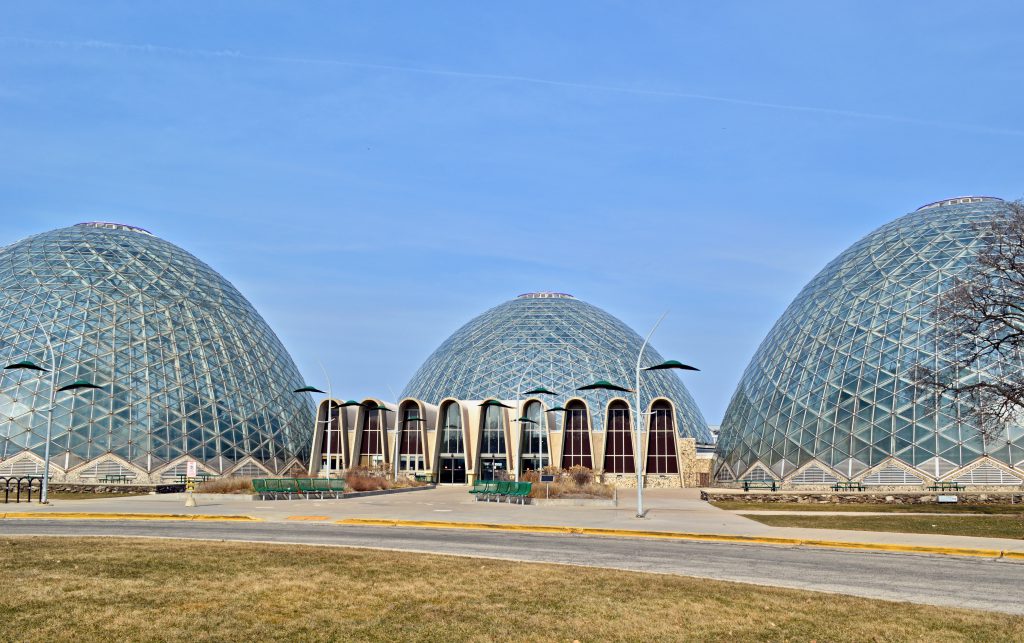
The Mitchell Park Domes have long been an iconic structure in Milwaukee, but high repair costs could lead to their demolition. Photo by Ana Martinez-Ortiz/NNS.
The Mitchell Park Horticulture Conservatory, better known as the Milwaukee Domes, has long been an iconic structure in Milwaukee.
Originally a private greenhouse attached to the Mitchell family mansion, The Domes became a staple on Milwaukee’s skyline in 1967 when construction on the final building was completed.
A report recommends the buildings be demolished.
Here’s what you need to know about The Domes’ potential demolition and past repairs.
What did the report say?
The Gallagher Museum Services conducted the report, which examined the Mitchell Park Horticultural Conservatory and the possibility of integrating the Milwaukee Public Museum with The Domes.
The report recommends demolishing The Domes. A new facility for the Milwaukee Public Museum would be built with the potential for a greenhouse to be attached.
The Milwaukee Public Museum is working on a $100 million campaign for its new facility. A combined facility would cost at least $300 million, according to estimates by Gallagher Museum Services.
What is going to happen?
At this point, no official decision has been made.
The Domes are considered a park facility, which means the county board must approve the changes. If The Domes and the Milwaukee Public Museum were to integrate, there could be a change in governance.
“My position is to restore and repair the domes,” Ortiz-Velez said.
Ortiz-Velez, who grew up on the South Side, said she is open to the idea of having the new Milwaukee Public Museum facility built in Mitchell Park.
Last year, Supervisor Marina Dimitrijevic and County Executive Chris Abele said they are open to the possibility of building a new space for the Milwaukee Public Museum in Mitchell Park.
The Domes Task Force has requested its own study and is awaiting those results.
How much would it cost to repair the Domes?
Repairing The Domes could cost anywhere from $60 million to $85 million.
To put things in perspective, the original cost for The Domes reached $4.5 million. Construction began in 1959 and ended in 1967, which allowed the county time to raise the funds.
In 2006, the blast on Falk Corp.’s property in the Menomonee Valley killed several people and damaged the glass structures of The Domes. Two years later, repairs were made with the aid of $500,000 in donations.
In 2016, all three domes were closed for repairs. Pieces of concrete had fallen in 2008 and 2015. As part of the fix, wire mesh was installed inside the glass structure. At the time of the re-opening, Abele said that the fixes were only a temporary fix.
What do The Domes mean to Milwaukee?
When the project began in 1955, 33 architects competed to design the conservatory. Donald L. Grieb, an architect based in Milwaukee, won the competition.
In 2017, the National Trust for Historic Preservation named The Domes a National Treasure.
Ian Bautista, the executive director of the Clarke Square Neighborhood Initiative and member of The Domes Task Force, said The Domes are intimately intertwined with the culture and identity of Clarke Square and Milwaukee. He believes their removal would have a negative psychological effect on the neighborhood.
The Domes
This story was originally published by Milwaukee Neighborhood News Service, where you can find other stories reporting on eighteen city neighborhoods in Milwaukee.
More about the Future of The Domes
- MKE County: Domes Plan Requires $30 Million From County - Graham Kilmer - Jul 2nd, 2025
- MKE County: Domes Project Lining Up Key Financing Component - Graham Kilmer - Feb 28th, 2025
- MKE County: Supervisor Adds Domes Project to 2025 Budget - Graham Kilmer - Oct 24th, 2024
- Supervisor Martinez Budget Amendment Advances “Domes Reimagined” Proposal - Sup. Juan Miguel Martinez - Oct 24th, 2024
- MKE County: Domes Group Proposes $133 Million Repair, Redevelopment - Graham Kilmer - Sep 3rd, 2024
- MKE County: New Domes Plan Expected This Summer - Graham Kilmer - Apr 22nd, 2024
- MKE County: New Plan Emerging To Save The Domes - Graham Kilmer - Nov 16th, 2023
- MKE County: Domes Costs Shock Supervisors - Graham Kilmer - Sep 12th, 2023
- Op Ed: Don’t Despair About the Domes - Emma Rudd - Aug 16th, 2023
- MKE County: Parks Launches Mitchell Park Campaign - Graham Kilmer - Jul 31st, 2023
Read more about Future of The Domes here
Political Contributions Tracker
Displaying political contributions between people mentioned in this story. Learn more.


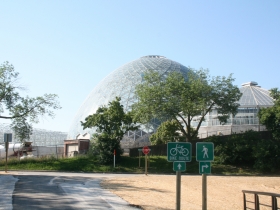
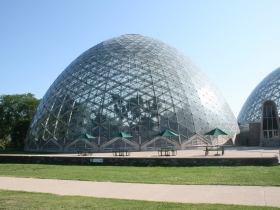
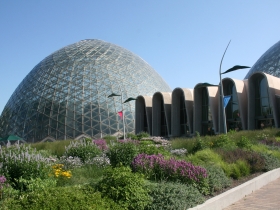
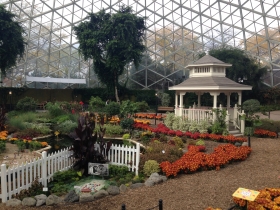


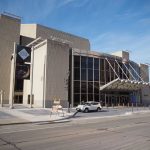



















New York City, March 31, 1979, “Task Force Says Dump Central Park.” Consultants engaged by the fiscally strapped City of New York recommended the demolition of the derelict and decaying Central Park. The consultants described the physical condition of the dangerous park as “dire,” after decades of deferred maintenance and neglect.
The costs of restoring the little-used park were estimated to be astronomical, especially within a context of declining use of a site that is surrounded by neighborhoods that are seen as dangerous and declining. In a side comment, one of the consultants said that the East Side of the park could be maintained as a green space for “a better class of people.”
The park’s management and staff concurred that the situation was hopeless, and that they had done all that they could with few resources. They cited the condition of the beautiful Bethesda Fountain, dry for two decades, as an example of an extremely costly repair, one running into several millions of dollars, for which they simply did not have the money. The park’s advocates were described as unrealistic dreamers and gadflies who didn’t get it and had a ridiculous vision for what the park could be. A parks official said, “We can’t just throw good money after bad.” Meanwhile, developers and advocates for the homeless were preparing plans for use of the decommissioned park land.
Flash Forward: New York City, March, 2019 Central Park has now been recognized as the pre-eminent urban park in the world. It is the third most visited tourist destination on the planet, attracting almost 40 million visitors per year. Fortunately, some thirty years ago, a group of activists rejected the pessimistic view and developed a vision for a renewed park. They raised money, more than $250 million over twenty-five years, and threw it – very carefully – at the park, creating a thing of beauty, activity and tranquility that is admired worldwide. And, in one small example of the destructiveness of pessimism, an early achievement was to get Bethesda Fountain working again at a cost of approximately $100 paid to the plumber of a visionary parks commissioner.
Much of the discussion of the Mitchell Park Domes is driven by a static, visionless and cost-based set of assumptions. This perspective seems to be shared by public officials and the Domes’ management and staff, whose attitude is that it’s all hopeless, that a vision for anything better, such as restoring the majestic Sunken Gardens, is absurd; and that, with respect to visitors, if they come, that’s okay, and if they don’t, that’s okay too. And, like the experience of Central Park, advocates for an inspired future are dismissed as unrealistic dreamers.
Every city has some sites that can be described as “iconic,” an overused term if ever there were one. But, the Domes are such a site, one of a handful in Milwaukee. They are unlikely to ever attract 40 million people a year, but they can be a major destination for visitors to Milwaukee with the right leadership, management and marketing. And they can be the anchor for a revitalized Mitchell Park and healthy community. The first step in moving in that direction is to define an expansive vision, one that sometimes seems to be beyond the ingrained pessimism of the current leaders and management.
A final note on this kind of opportunity. The preservationist movement in New York City was born with the destruction of Pennsylvania Station, one of the most beautiful railroad stations on earth, and its replacement by the underground nightmare of the new rail station and the hideous Madison Square Garden. Once it’s gone, it’s gone. And at that point, people look at photos of what was and ask, “How could they have done that?”
I am a volunteer at the Domes. Since January I have spent two to three days a week running the train exhibit in the Show Dome. During the last three months I have seen thousands of people come to the exhibit.I have met people from all over the country and a few from out of the country. Most of the non- Milwaukee people I talked with came from Illinois. I have seen multiple school groups, adult clubs, and weddings.I have watched professional photographers take photos of couples getting married and young girls celebrating their quinceañera. What I hear the most is the surprise from visitors at how beautiful the Domes are inside. The Domes are iconic but even more they are beautiful inside. The Domes are alive with activities and people. The Domes house a priceless collection of growing and flowering things. Unlike the museum, the Domes are not a single static display which never changes. Every four months a totally new exhibit comes to the Show Dome. The Tropic Domes changes daily, will that vine eventually cover the walkway? Visit each week and see it grow. Do cactus bloom? View this miracle in the Arid Dome. Most of all come to the Domes before you make a decision about what should be done to them. I feel certain if the doubters come inside they will become supporters.
Milwaukee has had a problem with destroying landmarks and then wondering why it was allowed to happen.
The “Domes” are in danger of going the way several pother landmarks that are know a a very large, potential groups of visitors.
And with the much thought against revival of the near north side of the downtown area, thanks to the Milwaukee Bucks, Fiserv and others who fought the good fight and won, this is not the time to go destroying more of Milwaukee’s heritage.
80 – 90 million? Almost any other project seems to run well over that with no guarantee of drawing people to Milwaukee.
It’s here, it’s known and the best way ot increase it’s drawing power is to fix it and the gardens. Somehow, with all the negative publicity about how the concrete falling form the roof being “fixed” by a series of nets, something that has been recognized and a stop gap repair, has indicated to the world that the Domes have become a decrypted, fading away edifice that is likely to be razed in the not-so-distant future..
RE: How much would it cost to repair the Domes?
The most recent study of repair costs, done in 2017 as a peer review of earlier engineering studies, established that long-term repairs to stop water seepage would cost a fraction of what is reported above.
https://www.milwaukeemag.com/stopping-leaks-key-mitchell-park-domes-repair-plan/
Excerpts: “Stopping water leakage via several measures would be the key to cost-effectively saving them, according to a report presented Wednesday night.
Preventing moisture seepage was the primary goal of a proposed $18.6-million repair option presented to the Domes Task Force. Wiss Jenney Elstner Associates (WJE) was commissioned by the National Trust for Historic Preservation to conduct a peer review of the latest study by GRAEF about options and costs. Milwaukee Magazine reported on WJE’s recommended approach Wednesday.
…
After a detailed slide show, task force members posed questions about the proposal, which incorporates and expands upon a $14-million option offered by GRAEF, an engineering firm contracted by the county to work on this and other projects.
In addition to replacing about 400 cracked glass panes, WJE would install all new metal “pressure caps,” which form links between the glass-and-aluminum cladding and precast concrete framing. A waterproof sealant would add further weather protection. Any potentially spalling concrete would be removed and repaired, and the custom water-filtration system would be cleaned.